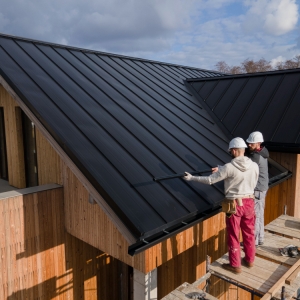In the unpredictable and often perilous world of maritime travel, the self-inflating life raft stands as a critical line of defense between survival and catastrophe. Designed to deploy automatically in emergencies, these inflatable life rafts have transformed emergency preparedness at sea, offering a fast, reliable, and compact solution that has saved countless lives. As international maritime regulations continue to evolve, self-inflating life rafts remain at the core of vessel safety protocols.

What Are Self-Inflating Life Rafts?
Self-inflating life rafts, also known as automatic inflatable life rafts, are emergency flotation devices that inflate automatically upon contact with water or manual activation. Typically packed in a compact, airtight container, these rafts are equipped with a compressed gas cylinder—usually CO₂ or nitrogen—that rapidly inflates the raft when deployed. Modern models often include canopies for weather protection, survival kits, and features to improve visibility and thermal insulation.
How They Work
Deployment of a self-inflating life raft typically follows this process:
Activation: When a vessel is sinking or evacuated, the life raft container is thrown overboard. A line attached to the raft is pulled to trigger inflation.
Automatic Inflation: Upon pulling or immersion, a gas canister activates, inflating the raft in under a minute.
Boarding and Survival: Occupants board the raft via boarding ladders or ramps. Most rafts include water, food rations, first aid kits, sea anchors, and signaling devices.
This streamlined process ensures that even under duress, crew members or passengers can quickly access life-saving flotation.
Key Features and Components
Durable Fabric: Constructed from rubberized or polyurethane-coated fabrics, the raft resists punctures, UV damage, and saltwater corrosion.
Automatic Canopy: Offers protection from hypothermia, sun exposure, and sea spray.
Ballast System: Stabilizing pockets or sea anchors minimize drifting and capsizing in rough seas.
SOLAS Compliance: Most high-quality rafts meet the International Convention for the Safety of Life at Sea (SOLAS) standards.
Compact Storage: The container is usually cylindrical or suitcase-style, designed for quick deployment and minimal deck space usage.
Applications Across Maritime Sectors
Emergency self-inflating life rafts are used in various sectors, including:
Commercial shipping: Required by international law on cargo vessels.
Fishing industry: Critical for small boats operating in remote waters.
Offshore oil platforms: Part of comprehensive evacuation systems.
Leisure boating and yachting: A vital safeguard for recreational users.

Regulatory Framework and Maintenance
To ensure readiness, self-inflating life rafts must be:
Regularly inspected (typically every 1–3 years, depending on the manufacturer and regulatory body).
Failure to maintain or properly install a life raft can result in non-compliance with maritime safety regulations and potentially fatal consequences during emergencies.
Technological Advancements
Recent innovations have improved performance and reliability:
Smart sensors: Trigger deployment based on water pressure or environmental conditions.
Integrated EPIRBs (Emergency Position-Indicating Radio Beacons): Allow for rapid location by rescue services.
Thermal insulation floors and inflatable floors for protection against hypothermia.
Self-righting designs that ensure usability even if capsized upon inflation.

Summary
Self-inflating life rafts are not just equipment and they are a maritime lifeline. Their ability to deploy quickly and operate reliably in life-threatening conditions makes them indispensable for any vessel navigating open waters. As technology and materials continue to evolve, these rafts will remain a cornerstone of marine survival strategies, offering peace of mind and real protection when it is needed most. For vessel owners, operators, and seafarers alike, investing in and maintaining high-quality self-inflating life rafts is a non-negotiable aspect of responsible maritime safety.







